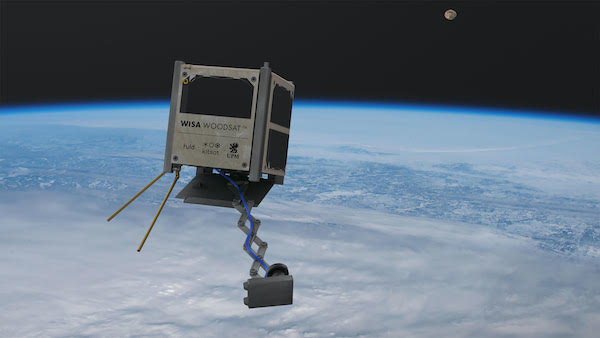
While a satellite made out of wood may sound far-fetched, Finnish company Arctic Astronautics is on track to send one into space by the end of the year. Named the ‘WISA Woodsat’, this micro-satellite is uniquely made out of plywood.
Just this week, the Woodsat rose almost 20 miles above the Earth, hoisted by a weather balloon. This was a test for the firm to observe how the satellite’s plywood construction would react in space-like conditions of the Earth’s orbit.
The micro-satellite was fitted with a selfie stick to document its journey, and a sensor provided by the European Space Agency, as per Mashable.
Measuring just four inches across, the Woodsat is crafted out of UPM Plywood before being dried out in a vacuum chamber. It is then coated in a layer of aluminum oxide to prevent it from degrading upon contact with highly reactive oxygen above the planet’s atmosphere.
The Woodsat’s first flight lasted almost three hours before the weather balloon was popped so the satellite could return to Earth. Such micro-satellites are being built for simple radio communication, and have the capabilities to send and receive messages around the world.
Going forward, constructing satellites out of plywood could be a more sustainable alternative to the usual aluminum or steel. It does less damage to the environment, and is considerably cheaper.
Take a look at the WISA Woodsat up close below.
WISA Woodsat stratospheric test flight reached a top altitude of 31.2 km and the flight duration was 2:54h. Below you can see the explosion of the balloon. #wisawoodsat #wisaplywood @kitsat @huldofficial @heurekafi @upmglobal #space #satellite #woodsatellite #avgeek pic.twitter.com/pioqCB6kto
The world’s first wooden satellite is on the way, in the shape of #Finland’s @wisawoodsat. #ESATech materials experts at #ESTEC in #NL are contributing a suite of experimental sensors to the mission as well as helping with pre-flight testing https://t.co/mm4Ofq8cHw pic.twitter.com/VAEouuYerN
— ESA Technology (@ESA_Tech) June 10, 2021
[via

Leave a Reply